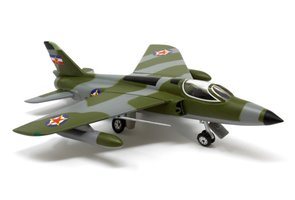Heinkel He-111H-16 A1+HK, 2./KG53, Air Launch V-1 Flying Bomb unit, Late - 1944
| Model manufacturer: | Corgi Aviation |
| Order code: | AA33716 |
| Scale: | 1:72 |
| Material: | Combined (Metal / Plastic) |
| EAN: | 5055286658174 |
| Weight: | 1.4 kg |
| Registration number: | 161600 |
| Dimensions: | 22.5×30.8 cm (L×W) |
| Machine manufacturer: | Heinkel |
| Air company: | Luftwaffe |
| Aircraft manufacturer: | Luftwaffe |
Product description
Just one week after the D-Day landings and the successful Allied invasion of enemy occupied Europe, the Germans were determined to show that the war was far from over and launched the first of their V-1 Flying Bombs against Southern England. Described as their first ‘Vengeance Weapon’, these pulse jet powered unmanned flying bombs emitted a distinctive sound from the intermittently firing engine and quickly became known as ‘Doodlebugs’, with the indiscriminate nature of their targeting spreading panic amongst the British population. At its peak, more than 100 V-1s were hurled against England from their launch sites on the French and Dutch coasts, however, although they spread panic amongst the population, the range of these attacks was restricted to southern English counties. In an attempt to extend the range of these attacks, a specialist bombing unit was formed and equipped with modified versions of Heinkel He-111H bombers, which could carry a Doodlebug slung beneath the starboard wing, between the wing root and the engine. With an electric connection running from the bomber to the V-1s engine, the optimum delivery method was for the Heinkel to reach a height of approximately 2,000 feet, before entering a shallow dive to reach a launch speed of 150mph. This was the speed needed for the V-1 to fly and once reached, the pulse jet engine was remotely fired, allowed to run for a few seconds, then released, with the parent aircraft diving away for a low level return to base. Many factors would then come into play and dictate where the V-1 fell, such as heading, wind direction and performance of the rather basic jet engine.
















